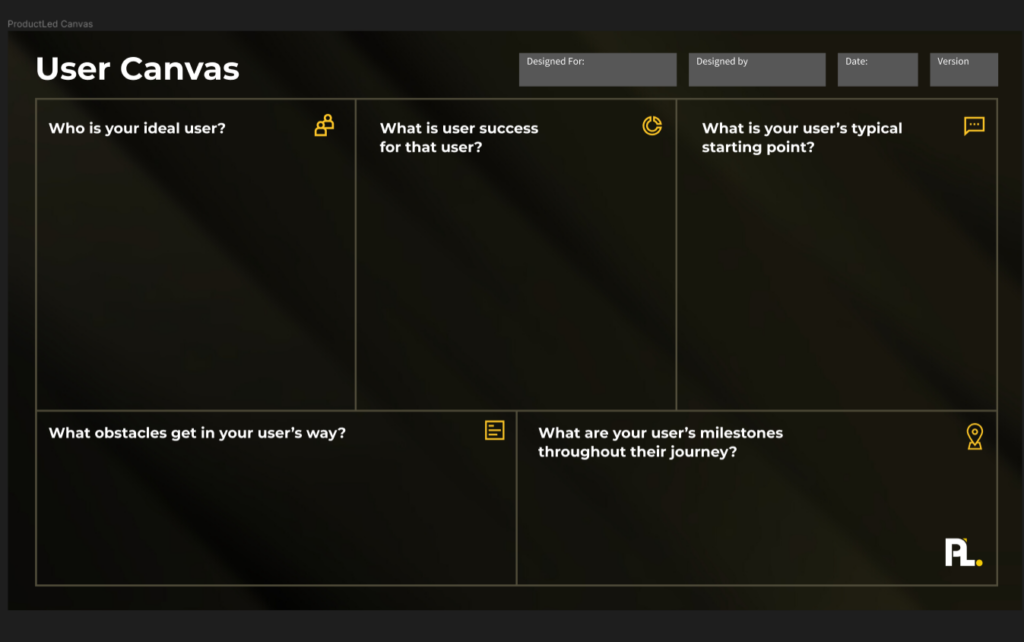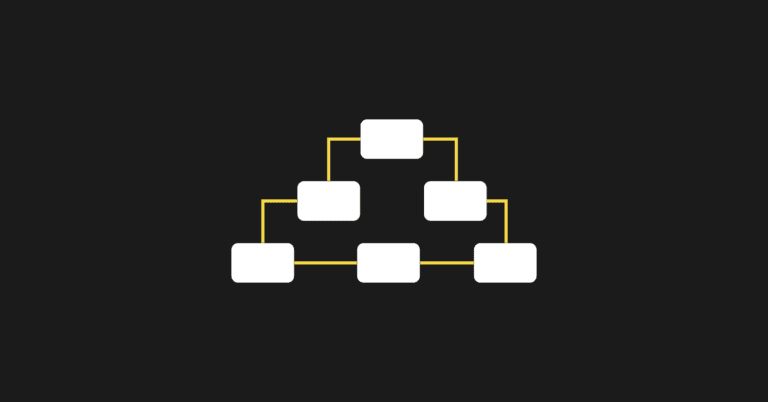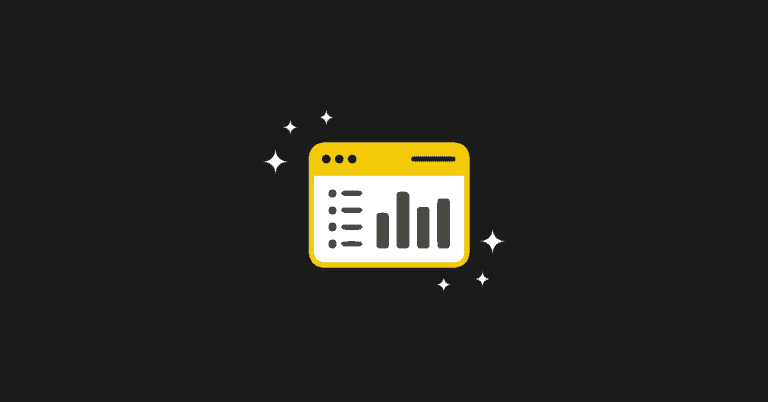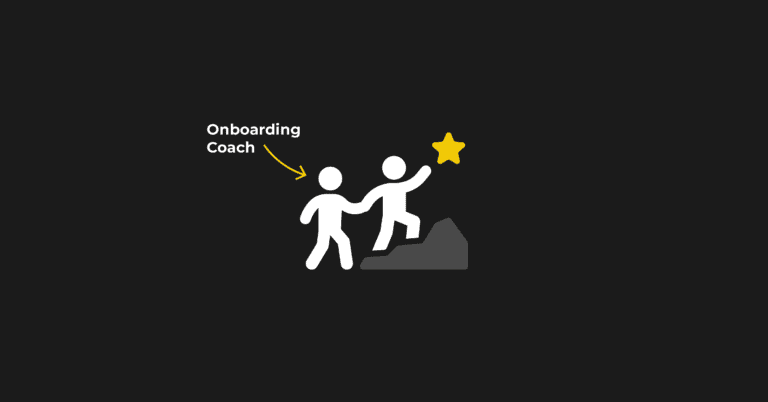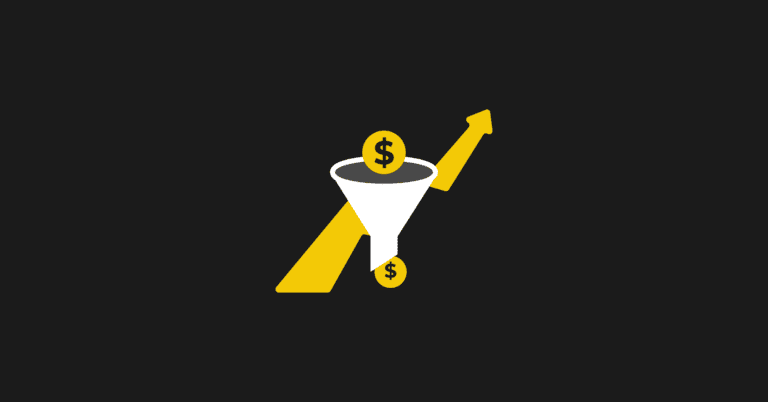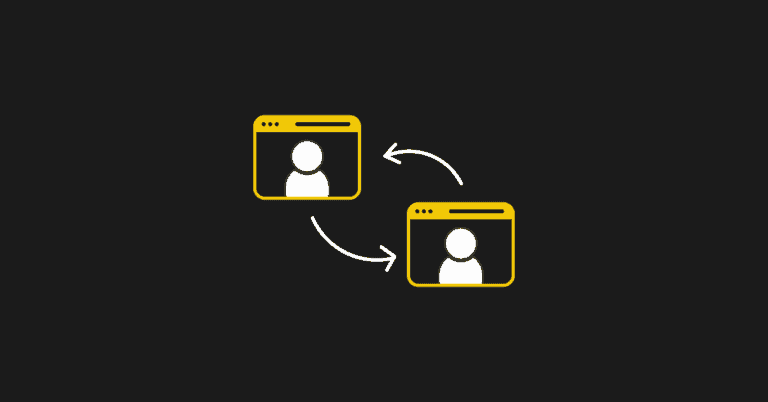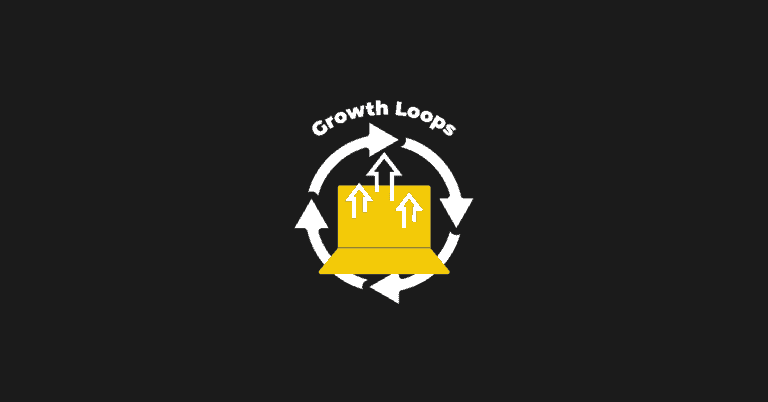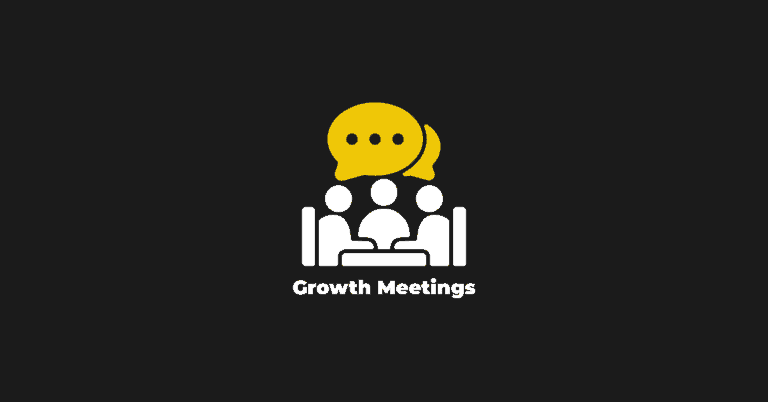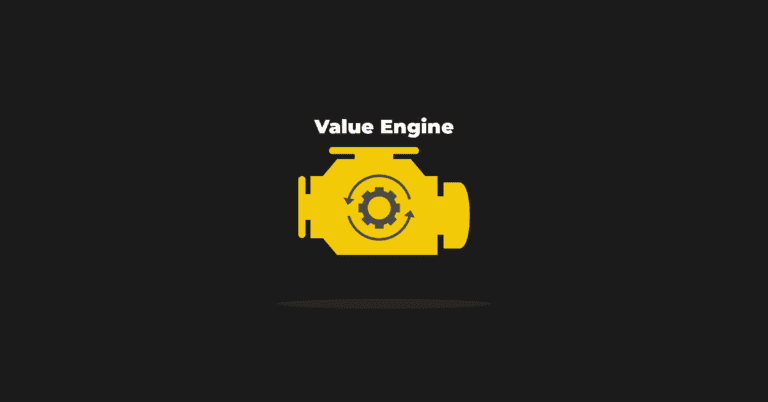This article is based on one core component that's revealed in The Product-Led Playbook. Packed with case studies and templates, it's the go-to manual you need to build a successful product-led business.
Not knowing your user is the equivalent of paying the “dumb tax” in business.
If you don’t understand your users well, that bill can be sky-high.
The opportunity cost of not understanding your users costs businesses trillions each year.
I won’t waste any more of your valuable time emphasizing the importance of understanding your user.
I’m going to make the bold assumption that you agree that understanding your user is critical to scaling your product-led business. But, in practice, most businesses have a weak understanding of who their users are.
Why is that?
Three reasons:
- You’re treating buyers and users as equals.
- Your customer research is a one-off event.
- You don’t have an “ideal user.”
Let’s dig into why each of these reasons blocks you from understanding your customers well.
You’re treating buyers and users as equals
Let’s get some quick definitions out of the way.
Users are the people who use your product.
Buyers are the people who buy your product.
What makes this confusing is that your user can be your buyer if selling directly to consumers. Case in point…
If you sign up for a simple application like Chess.com and use the product and then decide to purchase it, you are the buyer and the user. Bravo.
The challenge here is that most companies don’t differentiate between buyers and users.
If you work at a company that sells directly to consumers, your life is easier in many ways. Your user is almost always the buyer of the product.
Yet, for many companies that sell to other businesses, this is not the case. Your user is the one who uses your solution day-in-day-out, and they are not always the buyer. Your user might need to get approval from their boss to purchase your solution.
That’s where the distinction becomes important for a product-led company.
Why?
If a product-led company focuses most of its efforts on understanding the buyer and not the user, then it will wind up with a product that is perfect for the buyer, but users loathe it. This puts the buyer in an awkward spot. They chose the solution, yet everyone hates them because of it. Being forced to use an overly complicated product is no fun as a user.
That’s probably one of the reasons why you’re reading about the ProductLed System™️ in the first place.
This article focuses on the user, not the buyer. You've likely heard of an Ideal Customer Profile (ICP) before. At ProductLed, we refer to them as Ideal User Profiles (IUP). Because as a user, you know that if a product is great to use, you’ll advocate for it and work to secure a budget for it. Or you'll purchase it on your own.
So now that you know the differences between buyers and users, here’s why we’re dedicating an entire component of the ProductLed System™️ to understanding your users:
- It helps your entire organization understand who you’re really serving.
- It prioritizes the person who is going to utilize your solution the most.
- It helps your organization focus on making this user the hero.
But understanding your user is challenging, especially when…
Your customer research is a one-off event
I get it.
We’ve paid tens of thousands of dollars for user research at ProductLed and done a ton of it on our own.
Yet, when we didn’t know what we were doing, we would treat customer research as a one-off event.
We’d launch a user research product to understand our user's job-to-be-done.
We’d do user research to understand our value proposition.
You name it.
The problem with this approach is that it’s hard to stay up-to-date on the latest obstacles users face. And there’s no shortage of different approaches to doing user research. Most approaches take an enormous amount of time away from serving your users better.
ProductLed’s User Discovery Process will change that for you.
But even if you follow the ProductLed System™️, you’ll still fail unless you are crystal clear on who your ideal user is.
You don’t have an “ideal user”
Not all users were created equal.
Your IUP is someone who thrives at using your solution. They come with batteries included; they have high motivation to use your solution and find it easy to use your solution and get to value.
And they’re getting consistent reminders through friends, colleagues, and themselves to use your solution.
Ideal users are the equivalent of finding that needle in the haystack as a business.
Ideal users are effortless to serve.
They engage with your product regularly, share your product with others, upgrade without hesitation, and give you feedback on how to make it better.
You can spot your ideal users by looking at which customers use the product the most, upgrade the quickest, and leave the most testimonials.
When you don’t narrow down who your ideal user is, here’s what happens to your business:
- It becomes very hard to understand how to serve your users better because it’s vague.
- Because of this “vagueness,” deciding what to give away for free in your product-led model is difficult.
- Crafting an irresistible offer for your users is challenging as you’re trying to speak to too many users simultaneously.
- Your onboarding becomes chaotic as you have too many types of users who are trying to do too many different things.
- Your pricing becomes confusing as your users all see value differently.
In short, it’s like pushing a rock up a hill.
We’ll help you avoid that.
To help illustrate this, I’d like to share a story about a company called LucidLink.
One of the first initiatives they tackled when transitioning to product-led growth was to define one ideal user. They were admittingly shy about choosing one. The product has multiple use cases, so they didn’t want to pigeonhole it into one segment. But this led to general messaging that didn’t speak to anyone directly.
After taking our training, they doubled down on one specific user – remote teams. Once they updated their homepage copy and messaging to reflect this ideal user, they saw their signup rate increase by 40%!
This can happen to you, too.
By the end of this article, you’ll have way more clarity on who your ideal users are and know how to help them more.
We’ll help you laser in on who your user is by answering these five questions:
- Who is your ideal user?
- What is user success for that user?
- What is your user’s typical starting point?
- What obstacles get in your user’s way?
- What are your user’s milestones throughout their journey?
Combined, these five questions form the base of your user strategy.
What I love about these five questions is that you’ll unlock clarity quickly.
You can use this template to build out your user canvas.
Let’s dig in!
Who is your ideal user?
“Support your Ideal User Profiles and put the rest on life support” - Leah Tharin
Every product has an Ideal User Profile it attracts.
ClickUp attracts those who love productivity. Netflix attracts those who love binge-watching. Amazon attracts those who love the convenience of buying online.
Your business is no different. Your ideal user is someone who thrives at using your product. They get enormous satisfaction and value from it. They’re sticky, and they’ll either be able to pay for your product or they’ll have the influence to encourage a buyer to pay for your product.
Since product-led businesses lead by helping users get to value through a bottoms-up sales motion, we need to clarify who that user is so we can serve them better in the product experience.
By the end of this article, you’ll have a much better idea of who your ideal user is.
Even if you’ve done a lot of user research and have a pretty good idea of who your ideal users are, this process will help you narrow down your Ideal User Profiles significantly.
Pro tip: go through these activities individually and then have a debate as a team on who the Ideal User Profile should be.
Below I’ve mapped out three steps to help you identify your ideal user.
Step 1: Write down as many ideal users as you can
Don’t aim for perfection here. Just write down as many ideal users as you can think of for your product.

Remember, a buyer is not always the user. For instance, if you’re selling a marketing automation product, the VP of Demand Generation might purchase the product (a.k.a the buyer), but the Digital Marketing Specialist is the user of your product.
Once you’ve listed out at least five to 10 potential ideal users, it’s time to narrow it down.
Step 2: Identify a user’s likelihood of winning
The name of the game in being product-led is “user success,” so you should pick an ideal user who has a high likelihood of achieving success.
For instance, if you have a very technical application, will marketers or developers be better suited to finding success?
As a former marketer, I’ll throw myself under the bus and tell you it’s the developers who will be more successful.
Users “win” because of three main reasons:
- Motivation: They’re extremely motivated to play the game (either something is pushing or pulling them in this direction).
- Ability: It’s relatively easy for them to pick up and play the game (maybe they have programming experience or some ability that lets them pick up your product easily).
- Prompts: It’s top-of-mind for them. They’re constantly getting triggers to fix this problem, whether those are internal or external triggers.
BJ Fogg, a behavioral psychologist, has done incredible research that proves that as long as a user has these three characteristics, they can achieve any target behavior (a.k.a achieving success in your product).
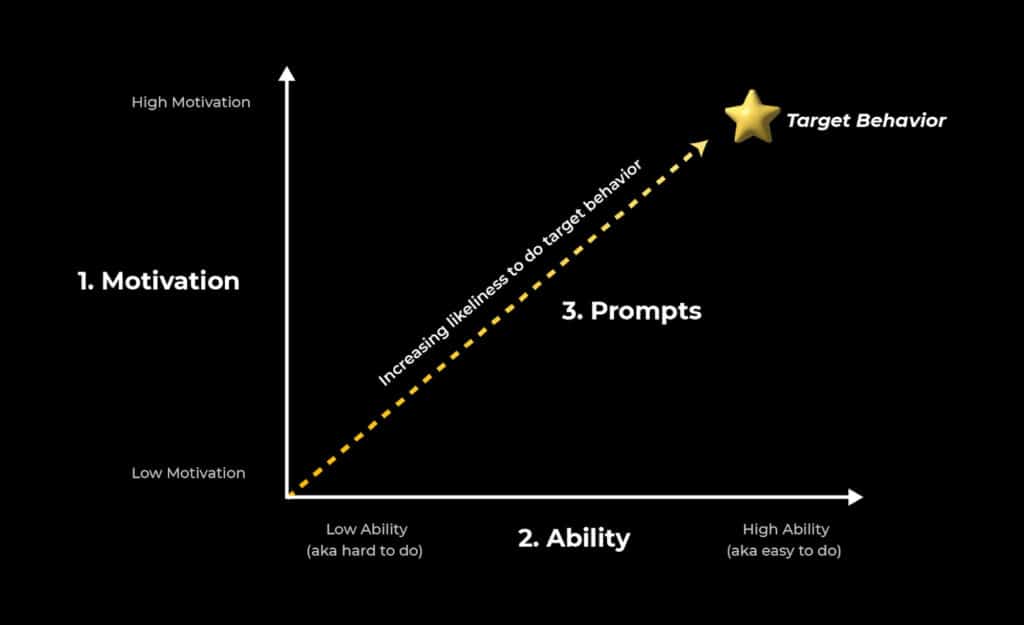
For the next step, you’re going to identify the motivation, ability, and prompts for each ideal user profile you mentioned above.
If you’ve been following along in the template, you’ll automatically start seeing a trend – your ideal users with the highest motivation, ability, and prompts will float to the top.
This doesn’t necessarily mean you’ll go ahead and pick the top one. You’ll want to discuss this with your go-to-market team and clarify who your ideal user is. For best results, have them go through the first two steps and then come to the discussion prepared with their own ideas on who they think the ideal user is.
If, however, you’re finding it very difficult to decide who your ideal user is, consider adding additional columns to vet your potential ideal users on criteria such as:
- How large is this total addressable market? If it’s extremely small, that’s a bit worrisome.
- Do these users convert to a paid account at a higher percentage than other users? If it’s your ideal user, you will see that they’ll convert at a higher percentage than other users.
- Are the retention rates of these users higher than other users? Ideal users stick around the longest as they get a lot of value from your product.
Here’s an example from a company that underwent this process at ProductLed Academy.
Oliver Meakings runs Senja.io, a software application that makes it easy to collect and share testimonials.
Oliver listed out their top three potential ideal users as:
- Course creators
- Freelance writers
- SaaS founders
When they went through which potential ideal user had the most motivation, best ability to use the product, and the most prompts, the course creator user popped up to the top.
But Oliver still wanted to serve the SaaS founder's audience.
Yet, when other SaaS founders in the coaching program weighed in on their motivation to use the product, they quickly noted there were many alternatives like G2, Capterra, and Trustpilot.
In short, the motivation for SaaS founders was low to use a solution like theirs, but what really helped Oliver make the tough call to focus on course creators was the fact that their product, as it was today, had all the features a course creator could ever dream of while the SaaS founders would insist on having more integrations to make the product work for them.
Let this next statement sink in for a minute.
Your ideal users love your product for what it is right now.
It is enough for them.
Yes, your ideal users want you to improve it, but even if you didn’t, they’d still support it.
For Oliver, he realized that even though he didn’t have all the other integration the SaaS founders wanted, his product was already perfect for course creators. He could scale well past $1M ARR by focusing on this one ideal user.
As Senja matured and Oliver focused on adding more features, he could and should branch out to another ideal user, but for now, focusing on the course creators will enable him to scale much faster.
Now it’s your turn.
Action item:
- Score each of your potential ideal users on their motivation, ability, and prompts.
- Shortlist the top one or two ideal user groups.
Then and only then can you move to the next step.
Step 3: Identify your Ideal User
Identifying your ideal user has to be done as a team. Sorry lone ranger!
You want to have a passionate discussion on who this ideal user is. You need to aim to get as much research and data as possible to back up your decision to pick this ideal user, but do keep this in mind…
You’ll never have enough research to make a decision with 100% accuracy here. And if you do, that probably means you analyzed this question to death, and you spent way too much time and energy trying to get it right.
If you find your team is still unclear on which ideal user to choose, I recommend asking these three questions:
- Use your head brain and ask: “What do I think is the right ideal user for our business?”
- Use your heart brain and ask: “What do I feel is the right ideal user for our business?”
- Use your gut brain and ask: “What do I have the courage to say our ideal user is?
Research shows that using your three brains is scientifically proven to aid you in making better decisions when there’s uncertainty. You can read more about the science behind it if you’re interested in reading mBraining by Grant Soosalu.
So now my question for you is, who is your ideal user?
Write it down.
Pro tip: only pick one Ideal User Profile, especially if this is your first time using the ProductLed System™️. Even if you add one more user, you’ll lose focus. Please avoid the temptation of more being better. This is one of those situations where less is more.
The first time we did this activity at ProductLed, we picked the wrong ideal user. But after doing this same activity five different times, we finally got closer to who our ideal user is now. I say this because getting it “right” the first time can feel debilitating. But I encourage you to pick an ideal user and then constantly refine it as you get more data and insight to validate that it is, in fact, the “ideal” user.
When you finally identify the right ideal user, you’ll know. You’ll notice that customers are easier to serve, you make more revenue per customer, and conversions increase as you double down. Remember the LucidLink example? Signups increased by 40%! The challenge is sticking with your thesis around who your ideal user is for long enough to identify some of those positive signals that validate you’re headed in the right direction.
Once you’re done going through this step within your template, let’s go a step deeper and uncover what success looks like for that ideal user.
What is user success?
When a user is successful, what are they now capable of?
When you play Mario and you pick up a flower, Mario grows 2x bigger, can spew fire, is basically invincible, and can be a complete badass.
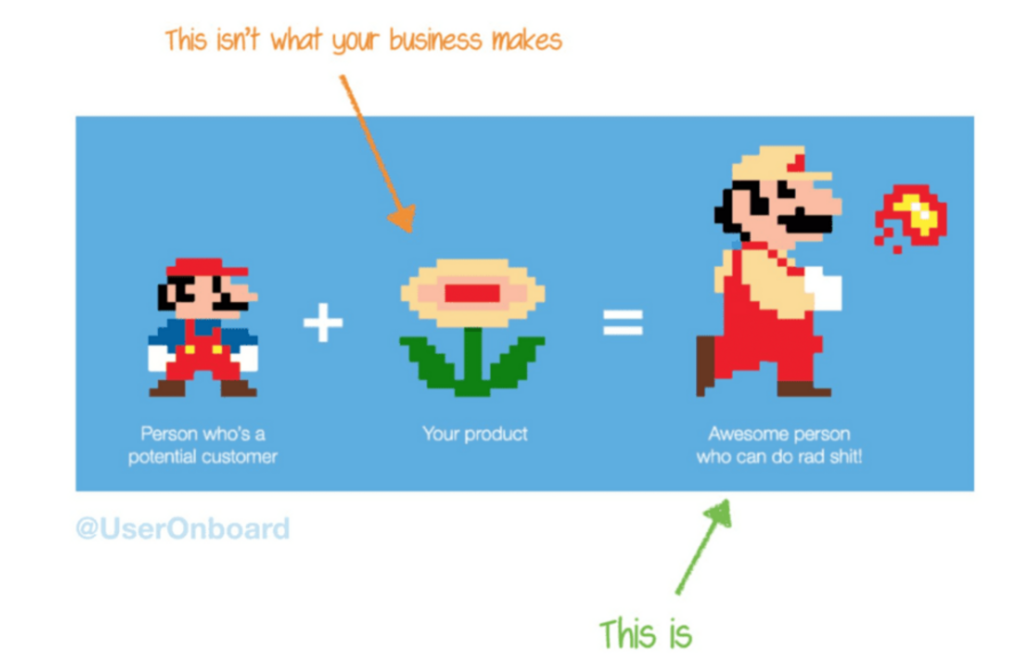
Your product is the flower.
User success is that badass version of Mario.
Here are a few less exciting but probably more relatable examples to help you identify user success for your product:
- Canva: Design anything and publish anywhere.
- Hotjar: Get the insights you need to create digital experiences your users love.
- Google: Find relevant answers to any question you have.
- Shopify: Build your dream business.
- Zapier: Automate all your busy work.
Pro tip: user success represents an upgraded world that your ideal user will eventually experience. That upgrade can exist across a spectrum of attributes: time, speed, simplification, freedom, a feeling, etc.
Now, let’s dig into what user success looks like for your product.
Step 1: Write down as many options for what user success is
I recommend writing at least 20 different versions of what user success looks like. Once you hit a wall, that’s where the really interesting ideas come out.
Once you’ve made your list of user success statements, let’s pressure test them.
Step 2: Pressure test your user success statements
A user success statement should meet the following criteria:
- It communicates what it’s not.
- It inspires.
- It is simple to understand.
- It’s achievable for your Ideal User.
Take each of your user success statements through the criteria and try to see which ones check all the boxes.
Once you’ve found a couple of user success statements, it’s time to narrow it down.
Step 3: Narrow down your user success statement to a one-liner
For example, at ProductLed, our user success statement is:
Build a successful product-led business.
What’s yours?
Step 4: Build your user success canvas
Now that you have your user success one-liner let’s add some color around what success looks like.
Building a user success canvas is hands down one of the best activities you can do as a team to get a better handle on what success will look like for your ideal users.
To build it out, you need to answer three questions:
- What do they SEE when they’re successful?
- What do they FEEL when they’re successful?
- What do they HEAR when they’re successful?
Each question prompts you to unpack the true value of your solution.
Let’s dig into each question further.
What do they SEE when they’re successful?
In the Mario example above, it’s pretty easy to visualize what Mario sees when he picks up that flower. He sees that he’s bigger, can spew fire, and is invisible.
When someone sees value in your solution, what does that success look like?
Do they make more money? If so, how much more do they make?
Are they more productive? If so, what are they able to do more of?
What are the tangible things that your users can see that indicate they’re getting value from your solution?
Write them all down and put them on the user success canvas.
The goal at this point is to write this all out and then validate this with user research at a later point.
Once you’ve mapped out what success looks like, let’s dig into the next question.
What do they FEEL when they’re successful?
When Mario picks up the flower, I’m sure he feels crazy powerful and indestructible.
When someone picks up your solution and sees value, how do you make them feel?
For a lot of software solutions, this is the feeling of productivity. You can now do a task 10x faster.
Or when using ChatGPT for the first time, it’s the feeling of wonder. Like what else can this do?
Write down as many emotions your users will feel after they’ve achieved their desired outcome.
On the flip side, maybe your product helps your users avoid painful emotions. Write those down too.
What do they HEAR when they’re successful?
When someone uses your solution, what do their colleagues, friends, and even customers say about them?
What others say about your users is often overlooked because it’s harder to find out. Yet, these social triggers are often what drive strong word-of-mouth growth. The goal is to make your users so successful that other people notice and start asking questions.
Here are a few examples of this:
- John starts using a data reporting tool that is simple and easy to use in a board meeting - the board members compliment him on the presentation.
- Sarah is tasked with making a poster for a charity event. She isn’t a graphics designer but uses Canva to make her poster. So many people at the charity event asked her where she got the posters professionally designed. Proudly she low-key mentions, “I made them myself.”
- Susan runs a SaaS company and implements a new project management solution. Initially, she was met with some skepticism around the new tool, but then a month later, the team constantly thanked her for making the right call. The team can’t imagine what they’d do without the new project management system. Because projects aren’t getting dropped anymore, customers are even happier.
Now it’s your turn.
Once you’ve honed in on what user success looks like for your company, it’s time to dig into where these users start off in their journey so we know when to start helping them.
What’s the user’s starting point?
Every journey starts with a problem.
Before using Slack, somebody had a problem communicating internally with their team.
Before Miro, somebody was tired of clunky presentations and wanted a better way to collaborate.
Try your best to identify what the first problem might be for your user.

What is your user’s typical starting point?
Here's an example.
Our customer’s starting point typically starts when they are overwhelmed with customer messages and start dropping the ball on getting back to people.
If you’re unclear on the typical starting point for your business, here’s a guide on how to do effective customer research to uncover this.
Once you’ve identified user success and your user’s starting point, we’ve identified the beginning and end points of their journey, which is incredibly useful. But now we must understand what gets in their way of achieving their goals.
What obstacles get in the user’s way?
Every obstacle is an opportunity for value.
If all it took was setting a goal to become a millionaire, we’d all be one. Obstacles are a natural occurrence anytime we set out to achieve a new goal. Obstacles often come in the form of friction.
Let’s say your ideal user’s dream outcome is to send an email out to 10,000 customers.
What obstacles might arise?
- Attempting to send emails manually.
- Researching for a better solution.
- Picking a solution to try out.
- Writing the email.
- Uploading the customer list to the tool.
- Getting a team member to proofread everything.
- Fighting off perfectionism enough to click send.
- Analyzing the stats to see if this method was more effective than the alternative way.
- Upgrading to a paid plan.

For every dream outcome, there’s an endless number of obstacles that get in the way of your users.
Now it’s your turn. I want you to list out what the main obstacles are that would prevent your users from achieving their dream outcome.
One common mistake I see a lot of my coaching students make is only thinking of the obstacles in their own product. To prevent this, I encourage you to break it down into the three stages of growth.

For the Acquire Stage, think of what are the obstacles that your user is going to run into before they even find your solution.
Think of when your user first encounters the problem your solution solves. What goes through their head? Do they immediately jump to trying to find a solution? Do they cobble together their own solution first? What pushes them over the edge to finally look for a new solution? How does your ideal user find out about what you do? How do you help them understand what your product does? Is it easy for them to sign up for your product? Are you answering their objections about the product? Are they motivated to solve this problem?
These are all questions that your user is going to go through in the Acquire Stage. Now, it’s your turn. List out all of the common obstacles your user will face.
Once you’ve completed the Acquire Stage, let’s take a look at the Engage Stage and what obstacles your user will encounter.
In the Engage Stage, your user is using your product. These are some of the questions and obstacles that might be going through their head:
- How do I even use this?
- How do I get to the first value?
- Is this the best way to solve my problem?
- How do I get consistent value out of this product?
- How do I remember when to use this product?
- How do I integrate this into my current workflow?
- What’s the best way to get my team to use this?
These are just a few questions to help you unpack what those obstacles might be.
In the Monetize Stage, here are some questions that might be going through your user’s head:
- How much is this going to cost me? If it’s in a foreign currency, it’s another factor to consider.
- What’s the best plan for me?
- Is it difficult to signup?
- Do I have to talk to someone to pay?
- Do you send invoices?
- What’s the cancellation policy?
- Do you have any guarantees?
- Do I trust your company to keep my data safe?
- How do I upgrade or downgrade to a new plan?
Now it’s your turn.
Your action item is to list all of the potential obstacles that might get in your user’s way in the Acquire, Engage, and Monetize stage.
The more obstacles you can identify, the better you’ll be able to assist your user in leveling up.
Remember: every obstacle is an opportunity for value.
Once you’ve mapped out all the obstacles your user encounters, it’s time to break identify what the main milestones are in your user’s journey.
These milestones will help us understand where users get stuck in the user journey and give users a clear picture of what’s next for them.
What are the milestones?
Now that you’ve listed out all the obstacles for a user to see value in your product for each stage of their journey, I want you to identify what the major milestones could be for your user.
Milestones are the markers of progress.
When you grow up, you hit several major milestones.
- Baby
- Child
- Teen
- Adult
Chances are you’re still celebrating your 4th milestone. 🙂
Your user journey is no different.
There are key milestones along the way.
Since you’ve already mapped out the obstacles for your users to overcome on their way to achieving user success, I want you to group them into buckets of related obstacles.
For instance, let’s say these are your user’s obstacles to seeing success with a landing page tool:
- Not hitting lead targets.
- Researching how to get more leads.
- Researching how to increase high-quality traffic.
- Creating high-converting copy for a landing page.
- Designing images for a landing page.
- Testing your landing page on mobile.
You can bucket these six obstacles into two groups.
Group 1: Beginner Obstacles
- Not hitting lead targets.
- Researching how to get more leads.
- Researching how to increase high-quality traffic.
Group 2: Intermediate Obstacles
- Creating high-converting copy for a landing page.
- Designing images for a landing page.
- Testing your landing page on mobile.
Each group has related obstacles.
Now for the fun part, define the milestone for each group.
Group 1’s beginner milestone is knowing how to get more leads.
Group 2’s intermediate milestone is creating a high-converting landing page.
Once you’ve defined the milestones for each group, let’s bucket your milestones into three groups.
Beginner milestones are those items that are required at the early stages of solving a particular problem. They’re past the starting point on the user journey, but they are by no means competent at solving the problem yet.
Intermediate milestones are those that require a degree of skill to execute.
While advanced milestones are for those who are exceptional at what they do. These are often referred to as power users in your product, as they’re maxing out your features and requesting new ones.
Now it’s your turn.
Action Items:
- Assign all obstacles to a group of similar obstacles.
- Identify a milestone that encompasses solving that group’s obstacles.
- Group your milestones into beginner, intermediate, and advanced buckets.
As you identify your milestones, keep in mind most milestones fit into two buckets:
- Achievement milestones (they did X, they made X amount).
- Engagement milestones (regular user, sent X messages).
If you’re unclear on whether you’ve chosen a good milestone, just run through this checklist:
- Can you track it?
- Is it meaningful to your user? (a.k.a would your user actually celebrate this on their own? Or better yet, pay for it?)
- Is it something your users actually want?
- Is it achievable for your users to accomplish this within a reasonable time limit?
Putting everything together
By now, you’ve built out your user strategy.
The next step is to put it all together so that you can easily reference your strategy and communicate it to the rest of the organization.
You can download a template of our ProductLed User Discovery Canvas so you can fill out each piece of your user strategy (be sure to duplicate it first to use it).
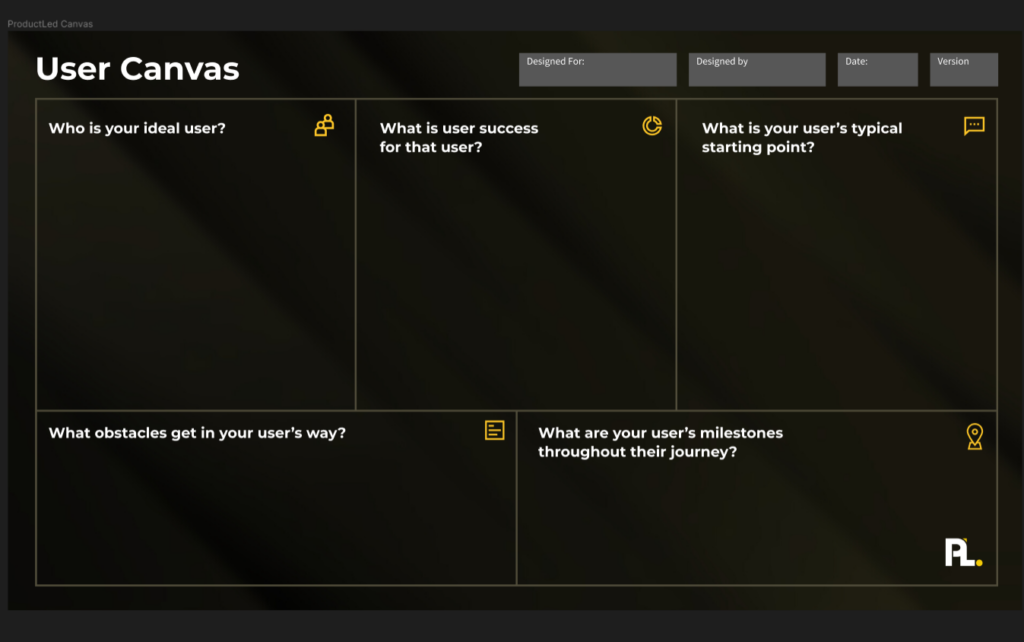
Once you’ve shared your ProductLed User Discovery Canvas with your team, ask everyone these three questions:
- What should we start doing to help our ideal user win?
- What should we stop doing that doesn’t support this ideal user?
- What should we keep doing to continue supporting this ideal user?
The answers to these three questions will help your team embrace this new user strategy and identify the next steps to put this research into practice.
Now, that you’ve made it to the end of the User Component, please share your top takeaway in the comments below!
To continue on your journey of building your product-led business, be sure to continue building out the other eight components of the ProductLed System™️.
Alternatively, if you’d like to work with a coach to implement these components into your business, be sure to check out the ProductLed Implementation Program.
It’s our intensive coaching program where we’ll help you build a strong foundation for product-led growth so that you can scale faster and with more control.
What’s unique about this program is we’ll work with you and your team to implement the proven ProductLed System™️ so that you can scale faster with less stress.
We’ll go through everything we went through today with your team to make sure that everyone is aligned on who your ideal user is for your team.

